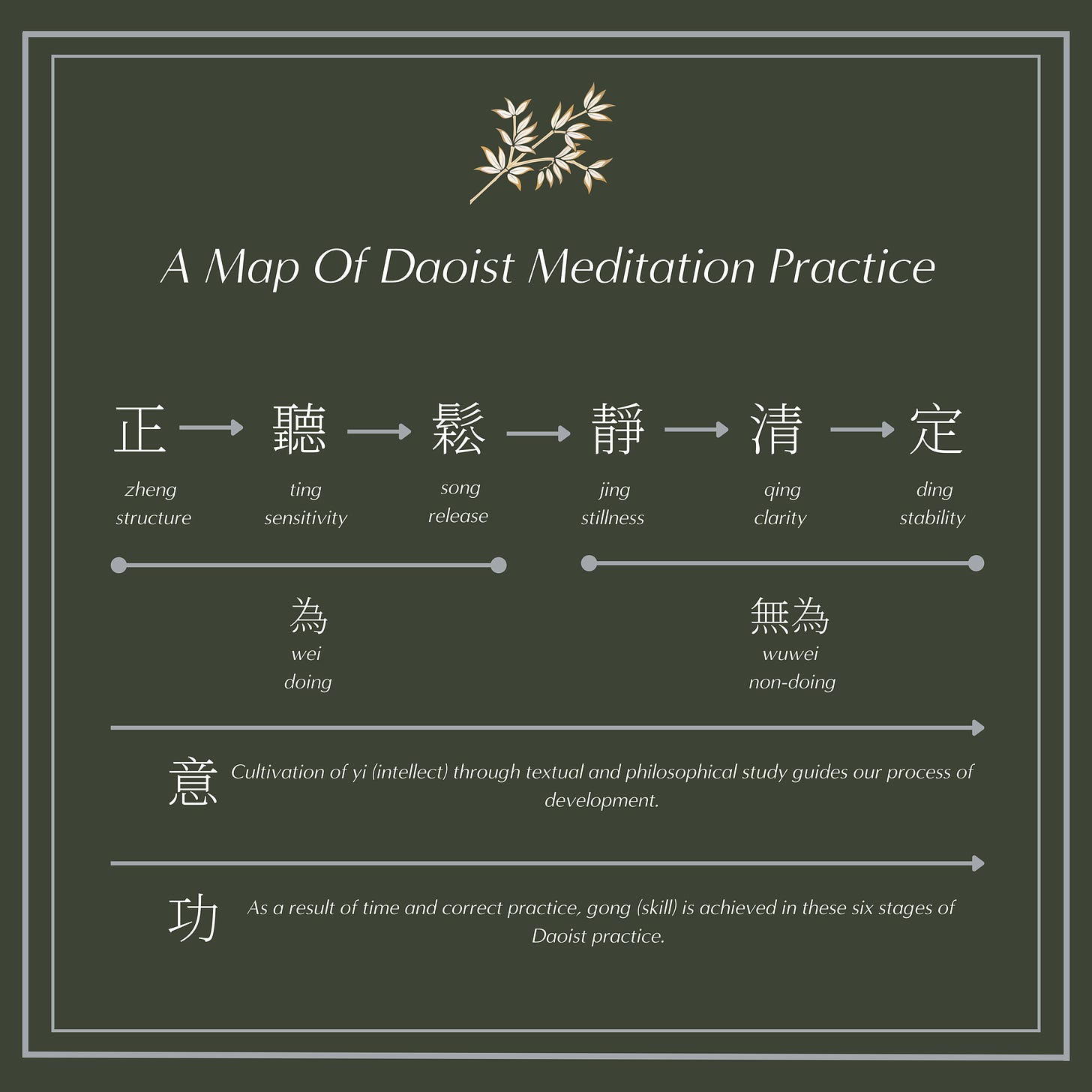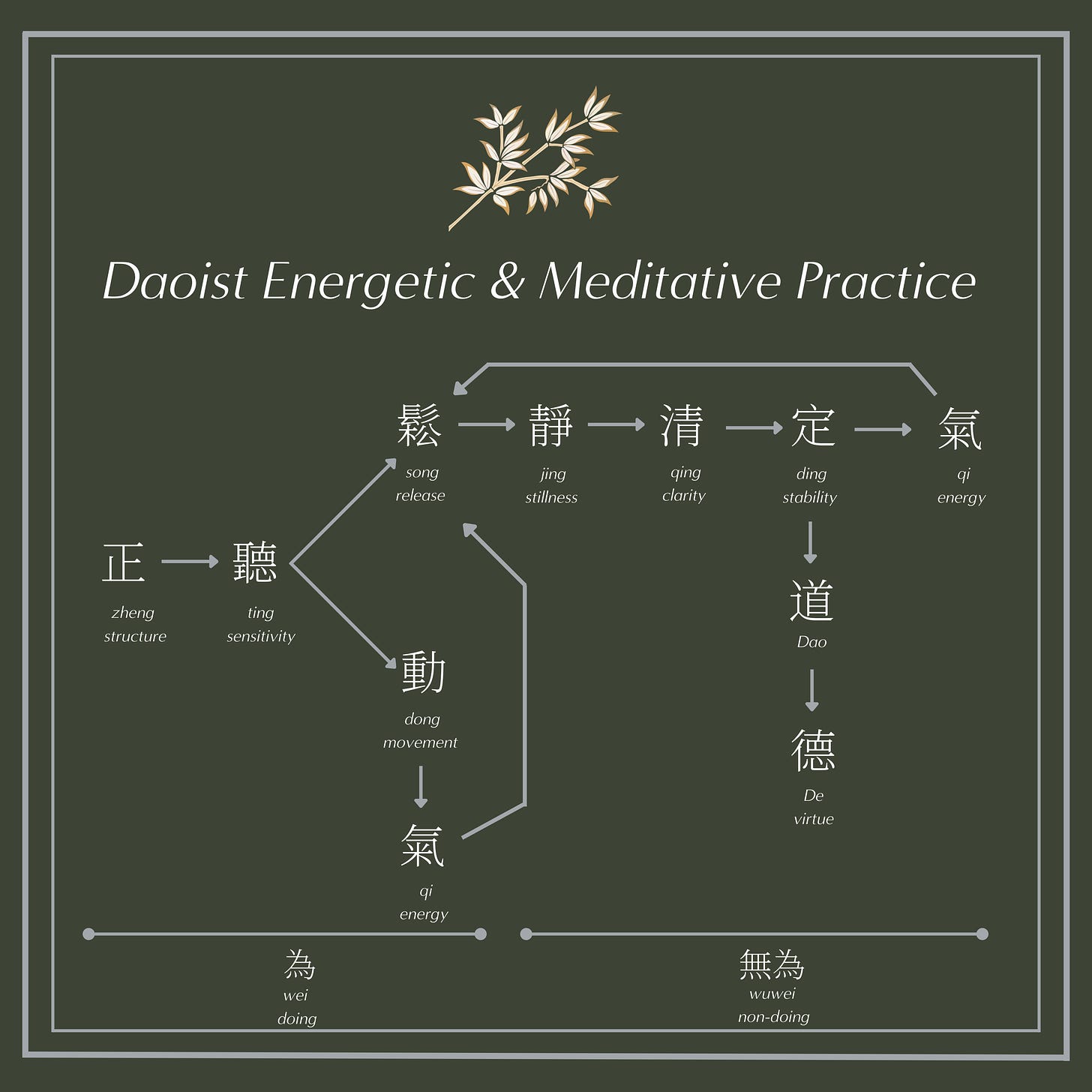Hello,
This piece introduces key qualities that are cultivated in Daoist practice and their relationships with one another. Below you will find two charts. The first of which looks solely at meditation practice, whilst the second also shows energetic practice. These are the first couple of images in a broader set of charts that I am currently working on to illustrate the process of Daoist inner cultivation.
Before we begin, I will just say again that Daoism is a tradition of inner transformation. One of its key characteristics is the holistic cultivation of the physical body, energetic system and mind. Whilst Buddhism focuses almost entirely on the mind through meditation practice, Daoism is both an energetic and consciousness-based tradition. Energetic practice is used to fuel the cultivation of release that takes place most importantly through seated meditation.
1) A Map of Daoist Meditation Practice
Zheng (structure), ting (sensitivity), song (release), jing (stillness), qing (clarity) and ding (stability) are six fundamental terms in Daoist meditation practice. They should be understood as six qualities that are cultivated sequentially. The first three qualities of zheng, ting and song are cultivated intentionally. They result from wei (doing). The cultivation of song (release) is the gateway into wuwei (non-doing). The following three qualities of jing, qing and ding arise of their own accord as a result of the cultivation of song (release).
2) A Map of Daoist Energetic and Meditative Practice
This second chart shows the relationship between energetic and meditative practice. The pathway of energetic development is here labelled dong (movement) to distinguish it from song (release). Energetic practice cultivates a greater amount of qi (energy), which is then used to generate greater song (release). As you can see, the path of release also eventually generates a greater amount of qi (energy), but only after the difficult meditative quality of ding (stability) has been achieved.
I have also added Dao and de (virtue) to this chart to show that it is the meditative path generated through song (release) that leads to the highest achievements. De (virtue) is a quality and presence that arises within someone as a result of their alignment with the Dao and therefore comes sequentially after it in this chart.
If you are based in London and would like to join a dedicated group moving through this process of inner cultivation, the Nüwa’s first in-person practice group will start in the next week or two. Classes will most likely be held in Bethnal Green on Tuesday evenings 19:00-20:30. Please get in touch if you’re interested in joining for a trial class.
道炁長存,
Oscar





Nice mapping . Really condenses the essence of Daoist practice
Really interesting to see it mapped out visually.